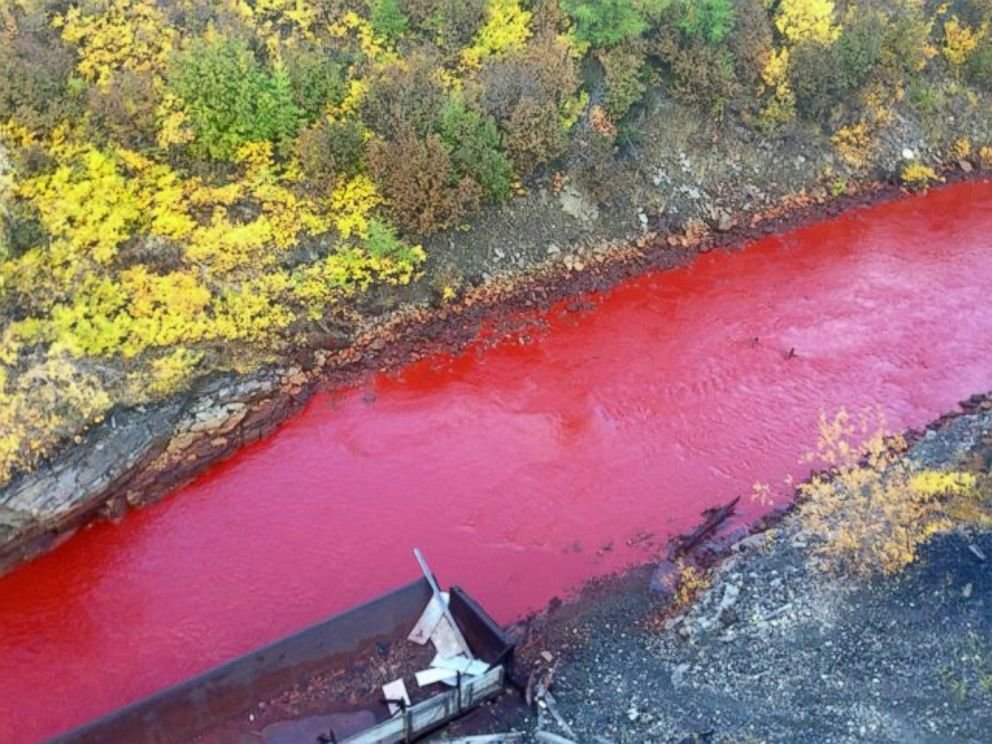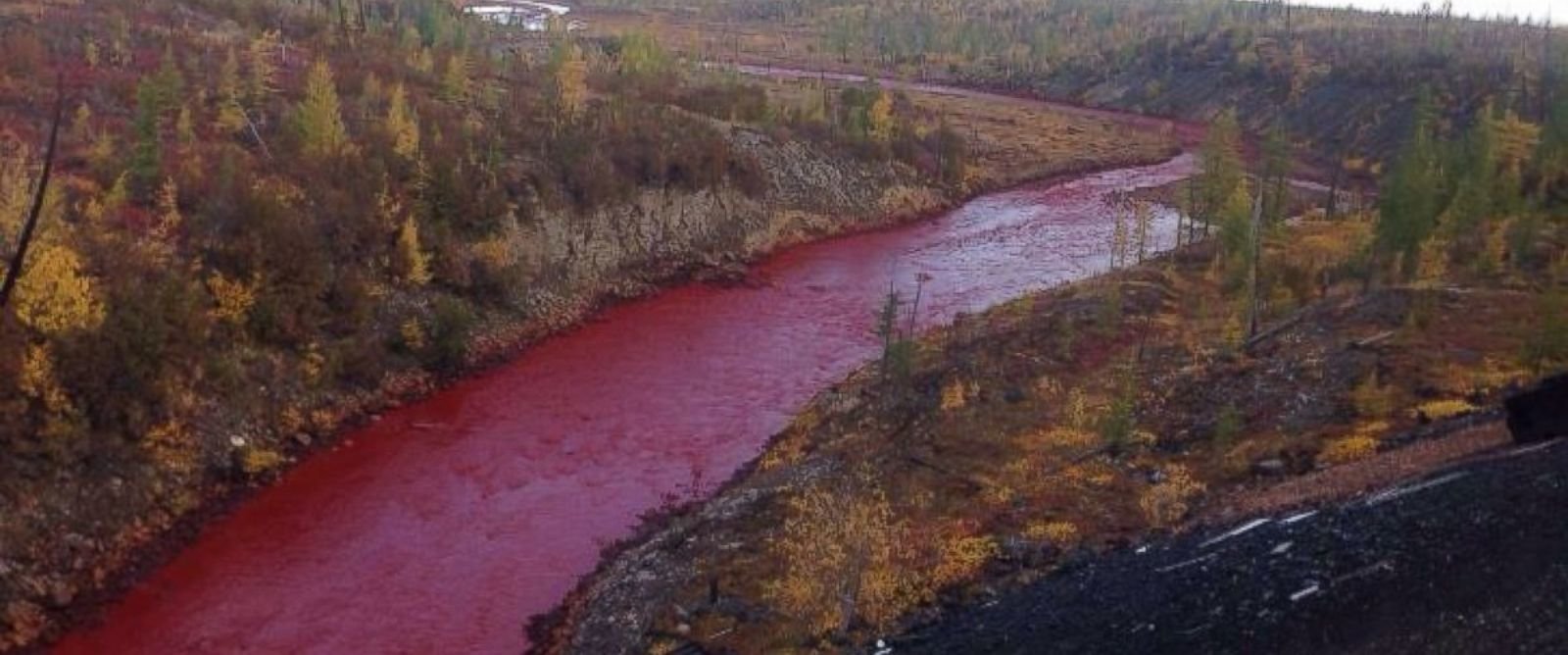Photos published on Russian social media appear to the show the Daldykan River near the city of Norilsk flowing crimson. Russian authorities have yet to establish a reason for the river's unusual appearance, but local people quickly linked it to a giant metals plant upstream. Russia's Environment Ministry said it was investigating the plant as the likely cause.
Norilsk is known as one of the most polluted cities on earth, built around factories mostly belonging to the vast metals company Norilsk Nickel. Some Norilsk residents wrote in a local social media group that they believe the river's biblical shade is linked to runoff from a nearby smelting plant.
Some suggested the color was being produced by wastewater mixed with mineral ore leaking into the river from the Hope Metals Plant.

Reached by ABC News, the factory declined to comment.
Area residents on social media and a local indigenous group said they were sure the color was coming from the area's metals plants, noting that it was not the first time they contaminated the region's water.
A user named Evgeny Belikov, who claimed to have worked at the Hope plant, said that workers referred to a reservoir connected to it as the "red sea" on account of its color, produced by ore runoff.
Other users posted older photos seeming to show the reservoir a similar color in an area that has large pipes running into it.
"In winter, the snow's also red," Belikov wrote on the social media group. "On the one hand, it's beautiful, but on the other, it's chemical."
Grigory Dukarev of the Association of the Indigenous Peoples of the Taimir Peninsula, which represents native communities in the area, told ABC News that he was preparing to submit a formal complaint to regional authorities asking them to investigate and was traveling to the river to record the pollution.
He said he was previously told that the runoff from the factories was not harmful and would cause minimal ecological damage. But he said he was skeptical.
"I'm going to ask the representative from the company to drink this water," Dukarev said. "Will they drink this water? I doubt that."




If it happened anywhere else it would be blamed on red algae.